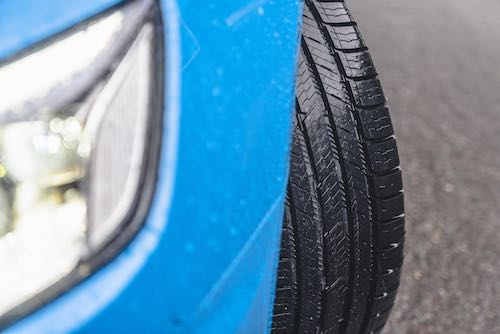We all expect good performance from our tires when we drive, especially if we have invested in premium tires. During the summer season, we can drive a bit faster, as the roads tend to be better and offer perfect driving conditions. When driving during the summer and the fall, your main challenges will be heavy rain or then during late fall that you can have some really bad weather before the winter arrives. The time you have to be careful is the time you have bad weather before you have time to put the winter tires on your car.
Good all-season tires must have excellent properties both on dry and wet roads. Safety and durability should always be of the highest importance when choosing premium tires. You surely want the best possible grip combined with precise and logical steering to make driving smooth, easy, and comfortable, even on a rainy day. Good all-season tires will have excellent wet braking abilities and great hydroplaning resistance. This should keep you safe regardless of what summer weather you will experience when you drive. Avoiding hydroplaning is one of the key safety issues during the summer, as it is a major cause of accidents when it is raining.
Make sure to change the all-season tires to winter tires in time before you experience too severe winter weather. Even with state-of-the-art all-season tires, they will not be safe to drive with once the temperature drops below zero degrees. During winter conditions, the problem with all-season tires is that they turn hard, as the rubber mixture is optimized for plus degrees. So makes sure that you change in time to ensure that you drive safely throughout the year.
What you will need to make sure to do is that you maintain your premium tires so that they reach their intended lifetime. You will need to rotate the tires between front and rear positions to even out any differences in wear between the tires in the front and the rear position. You will also need to measure the tread depth to ensure that it is at least 5/32 inches so that you will have proper driving safety. Check also the tire pressure to ensure that you have the correct tire pressure; too low tire pressure will increase the car’s fuel consumption and will also wear out the tires faster. The performance will also be far from optimal when the tires are underinflated.
For electric cars and hybrids, it is important that you check the tire manufacturers’ recommendations related to use on electric vehicles. If they recommend it, the tires tend to be a bit more wear-resistant to cope with the higher wear caused by the higher weight and the higher torque. The higher wear will lead to more frequent tire rotations, so make sure that you measure the tread depth more frequently and rotate the tires when you detect a difference of 5/64 inches between the front and the rear tires.
For more information regarding premium tires for summer conditions, visit: https://www.nokiantires.com/
